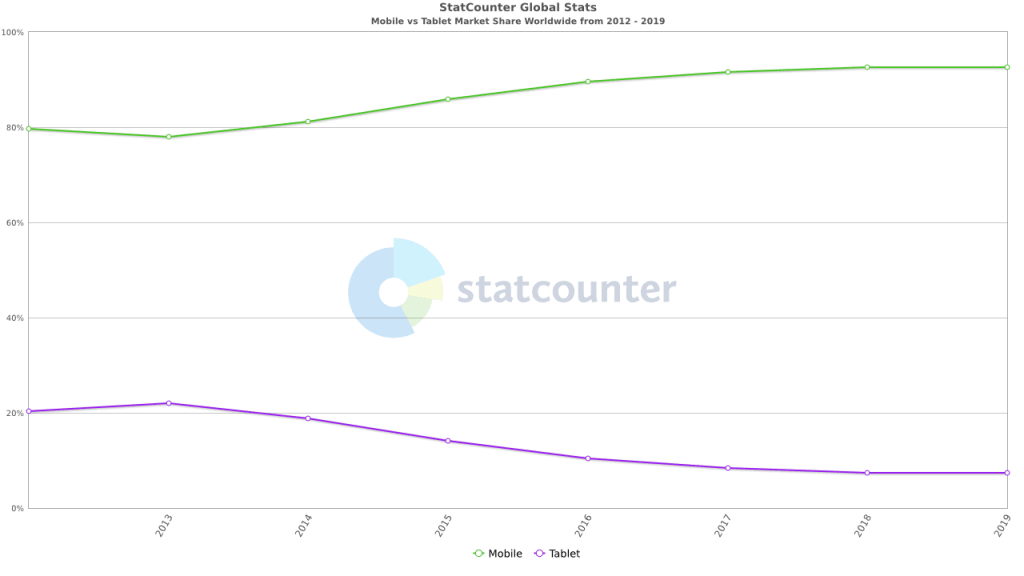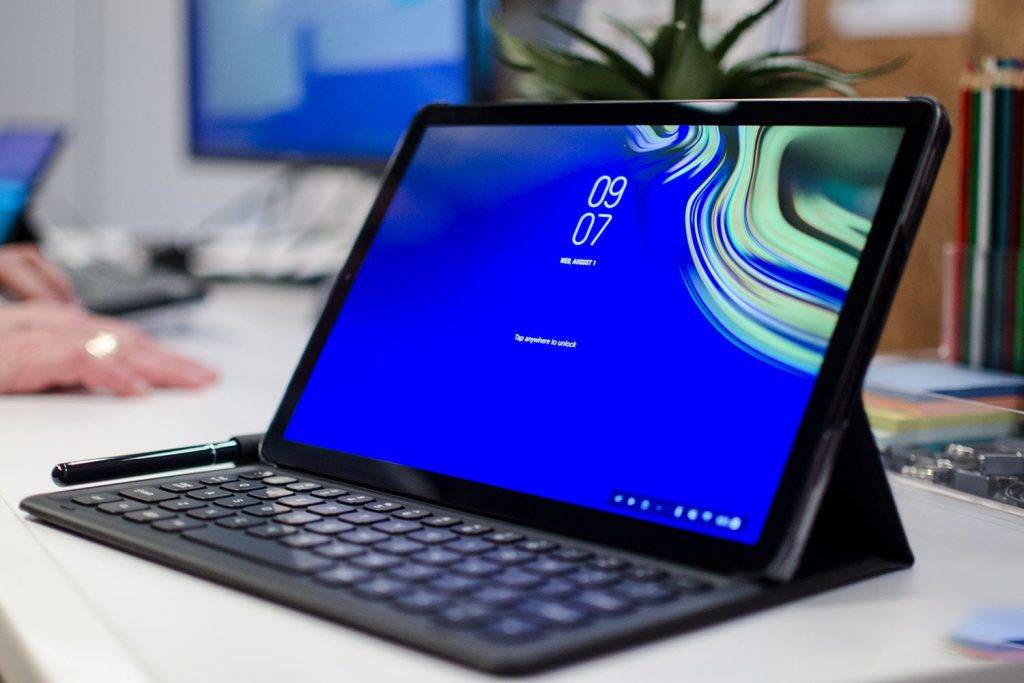Back in 2010, Apple introduced a new category of devices – this device was not a phone as it featured a much larger screen in the age of 4.5″ devices but it was also less bulky and more portable than a laptop, this new category of devices was the tablet or as Apple famously calls it, the iPad.
Rise of the Tablet
The launch of the iPad saw a number of other manufacturers jump on the bandwagon of making tablets as consumer demand was souring over the new form factor. One of the early adopters were the likes of Samsung and Sony who created slightly cheaper iPad replicas in an effort to get a piece of the pie. This model of copy/paste then undercut the competition had worked really well with the smartphone and OEMs hoped that the same would be replicated in the tablet segment but this wasn’t to be so.


The iPad, Image Courtesy
Taking a brief look at Samsung’s approach to the tablet industry, the company released the first ever Android tablet, the Samsung Galaxy Tab in September 2010, featuring a 7-inch display, running on Android 2.2 Froyo, 2GB of internal storage (not RAM) and a 4000mAh battery compared to the first iPad, which featured a 9.7-inch display, iOS 4, 16GB internal storage, and a 6600mAh battery. The Samsung product was already lagging behind in specifications but one could argue that it cost half the price of the iPad but that was the plan, offer a seemingly similar product at a much lower price.
This trend was followed by Sony, Huawei, Asus and even Amazon. Things did get better over the years with improvements being seen across the board in terms of hardware and software (Google did eventually make an Android version optimized for tablets but things didn’t quite work out) but there was a growing concern that Android tablets were just bigger phones with nothing more to offer apart from laggy experiences, this became very evident when the iPad’s market share in the tablet segment soared past 50% and never looked back. Currently, according to Statcounter, Apple’s iPad commands 70% of the market while Samsung following at a distant 15% – now that’s what Kenyan telcos would call dominance.


Tablet Market Share by Vendor, 2012 – 2019
Tablets vs Phones
Before things went south for Android OEMs with their tablets, there was a brief moment of glory which saw new manufacturers shine with dirt-cheap tablets. At this point in time is when we would see random people shamelessly walking around with a tablet on their face in the name of making calls – Those were strange times.
This sudden sore in tablet penetration was not only driven by the low prices but also consumer demand who saw this new form factor of devices as an alternative to the smartphone (due to its larger screen) as opposed to being a complimentary device to their phones. As a result of this, between 2010 and 2013, the mobile phone market share shrunk as that of tablets grew.
As demand for tablets increased, the prices lowered and the variety increased but simultaneously, the quality of the tablets took a hit and I am not talking about the already plasticky build of these budget tablets but in terms of performance and usability. See, while Apple’s iPad platform was driven by dedicated hardware, software and apps meant to run on a bigger screen and offer the consumer better productivity than their phones, Android tablets just ran plain old Android which was neither optimized for bigger screens nor the limited hardware OEMs subjected users to.
As smartphone screens grew, the future of the tablet became even more blurry
This meant that the Android market was flooded with tablets with 1GB RAM and outdated software which led to some of the worst user experience on any mobile device. However, Android tablets’ problems started with the launch of phablets, just one year after the tablet saw the light of day. The phablet form factor was debuted by the Samsung Galaxy Note. The Galaxy Note launched back in 2011 offered a 5.3-inch display which again, was larger than the 4-inch screens people were used to.
The phablet was the first step in shrinking the line between tablets and smartphones. As smartphone screens grew, the future of the tablet became even more blurry, especially considering the poor optimization the platform offered on Android. The demand for bigger screens was now being met by phablets which have since grown to over 6-inches in screen size.


Smartphone market share vs Tablet market share, 2012 – 2019
The ultimate death of budget Android tablets was further cemented by the copy/paste nature we discussed earlier which saw OEMs churn out even cheaper phablets. Some brands like Infinix even “borrowed” the series name from Samsung, Note and went ahead to even implement the stylus pen, a distinctive feature of the Samsung Note series.
This influx of phablets with lower price tags and actually better specifications over the years left no room for the dimming light of the budget tablet. The last time we saw a budget tablet launch, was the TECNO DroiPad 7D which was actually fronted as a children’s device and not anything to aid with productivity but the death of the budget tablet didn’t actually mean general death of the tablet.
New Age Tablets – Hybrids


Samsung Galaxy Tab S4 | Image Courtesy Digital Trends
Since 2018, we have seen the tablet focus its muscle competing with the laptop as opposed to the smartphone. The launch of the more powerful iPad Pro, Microsoft Surface Pro and a number of other hybrid tablets including the Samsung Galaxy Tab S4, prove this point.
Manufacturers have finally realised that tablets need to be powerful enough to do some heavy lifting while still maintaining their portability. This has led to the introduction of the stylus and keyboard accessories to front these large-screen phones as productivity devices and it’s all working out.
Some of the best tablets right now include the Apple’s 2019 iPad lineup (iPad Pro, iPad Air, iPad, iPad Mini) Samsung Galaxy Tab S4, Microsoft Surface Pro and even the mid-range Samsung Galaxy Tab S5e. If you are looking for a budget tablet in 2019 you are on the wrong planet, tablets have now evolved to proper productivity devices aiming at replacing the laptop and thus, their pricing will reflect this, seeing that the cheapest iPad starts at $399, the same price we get the Galaxy Tab S5e – which, come to think of it, for what you get, is actually quite good prices.
Featured Image Courtesy: Tech-ish


Comments